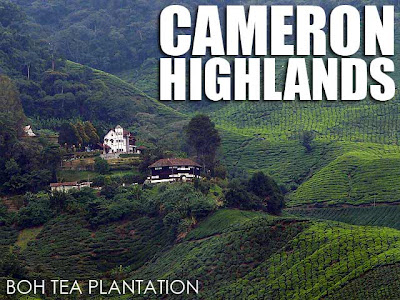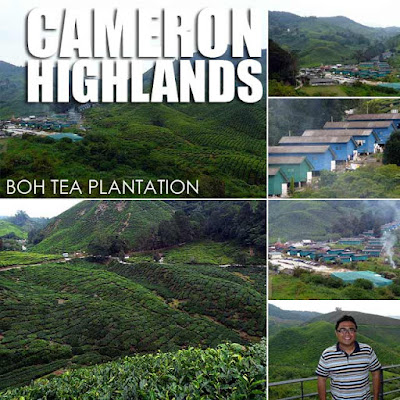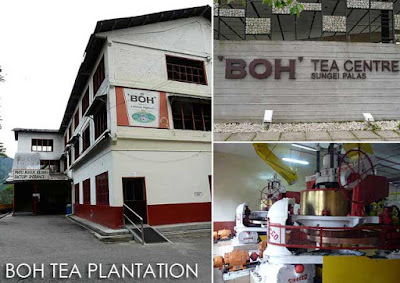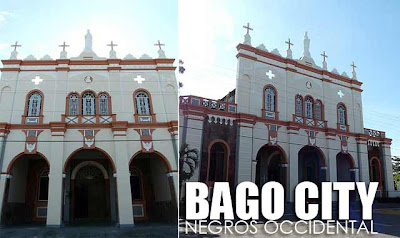Bus travel from Kuala Lumpur, Malaysia to Singapore and vice versa is very convenient. You can easily get on a bus at the Puduraya Bus Station anytime of the day. But since I was with my family, I made sure to purchase the tickets months before. It was a good thing I was in Malaysia several times this year before our Singapore trip so I got us front row seats on the executive bus.
A regular round trip ticket on the 20-plus seater executive buses is between RM80 to 100 if you buy it in Malaysia (remember that tickets can cost double in Singapore). The luxury 16-seater buses can be triple that or more. But seats can come with individual TV screens or even WiFi Internet access (such as Transtar which leaves from the Pasarakyat Bus Terminal off Jalan Imbi/Bukit Bintang). The choices for land travel between Singapore and Malaysia are endless.
Since the only thing you'll see along the way would be Malaysia's modern highway system, take this opportunity to rest or sleep. The trip usually lasts five to seven hours, depending on the bus company and how long the lines are in Singapore and Malaysia Immigration. So it's best not to be at the border during rush hour when workers move between Singapore and Johor Bahru.
The only thing I did not like about our trip was that place called Restoran Jaya, the stopover of the Transnasional bus, because the flies were swarming all over the place and on the food! I didn't expect to see anything like that in Malaysia, especially at a bus stop. And we didn't get to finish lunch with all the flies! In fact, the flies got in our bus and we had them as guests all the way to Singapore! But aside from that, the trip was fine.
I know of two major bus stops in Singapore which receives buses from Malaysia. In my previous trips, we were dropped off at Golden Mile along Beach Road. For this trip, it was the Lavender Bus Station along Lavender Street. There are other stops or private station depending on the bus company.
Puduraya to Lavender v.v.
Mahligai Espress +65 62949306
Transnasional +60 (3) 2070300/20705044
Puduraya to Golden Mile v.v.
Konsortium +60 (3) 40416789
Puduraya to Station v.v.
Citiexchange Express +65 63981216
Lapan Lapan Travel +65 63922188
Suasana Edaran +60 (3) 20722666 or +65 62962666
Pasarakyat to Lavender v.v.
Transtar Coach +60 (3) 21411771 or +65 62929009
Station to Golden Mile v.v.
Grassland Express +65 62931166
StarMart Express +65 63965681
Station to Station v.v.
Aeroline +60 (3) 21649611 or +65 63419338
Airebus +60 (3) 22870300 or +65 67376535
First Coach +60 (3) 22873311 or +65 68222111
Luxury Tours & Travel +60 (3) 20783988 or +65 67332808
Nice++ Bus +60 (3)22721586/22723634 or +65 62565775
A regular round trip ticket on the 20-plus seater executive buses is between RM80 to 100 if you buy it in Malaysia (remember that tickets can cost double in Singapore). The luxury 16-seater buses can be triple that or more. But seats can come with individual TV screens or even WiFi Internet access (such as Transtar which leaves from the Pasarakyat Bus Terminal off Jalan Imbi/Bukit Bintang). The choices for land travel between Singapore and Malaysia are endless.
Since the only thing you'll see along the way would be Malaysia's modern highway system, take this opportunity to rest or sleep. The trip usually lasts five to seven hours, depending on the bus company and how long the lines are in Singapore and Malaysia Immigration. So it's best not to be at the border during rush hour when workers move between Singapore and Johor Bahru.
The only thing I did not like about our trip was that place called Restoran Jaya, the stopover of the Transnasional bus, because the flies were swarming all over the place and on the food! I didn't expect to see anything like that in Malaysia, especially at a bus stop. And we didn't get to finish lunch with all the flies! In fact, the flies got in our bus and we had them as guests all the way to Singapore! But aside from that, the trip was fine.
I know of two major bus stops in Singapore which receives buses from Malaysia. In my previous trips, we were dropped off at Golden Mile along Beach Road. For this trip, it was the Lavender Bus Station along Lavender Street. There are other stops or private station depending on the bus company.
Puduraya to Lavender v.v.
Mahligai Espress +65 62949306
Transnasional +60 (3) 2070300/20705044
Puduraya to Golden Mile v.v.
Konsortium +60 (3) 40416789
Puduraya to Station v.v.
Citiexchange Express +65 63981216
Lapan Lapan Travel +65 63922188
Suasana Edaran +60 (3) 20722666 or +65 62962666
Pasarakyat to Lavender v.v.
Transtar Coach +60 (3) 21411771 or +65 62929009
Station to Golden Mile v.v.
Grassland Express +65 62931166
StarMart Express +65 63965681
Station to Station v.v.
Aeroline +60 (3) 21649611 or +65 63419338
Airebus +60 (3) 22870300 or +65 67376535
First Coach +60 (3) 22873311 or +65 68222111
Luxury Tours & Travel +60 (3) 20783988 or +65 67332808
Nice++ Bus +60 (3)22721586/22723634 or +65 62565775



















































